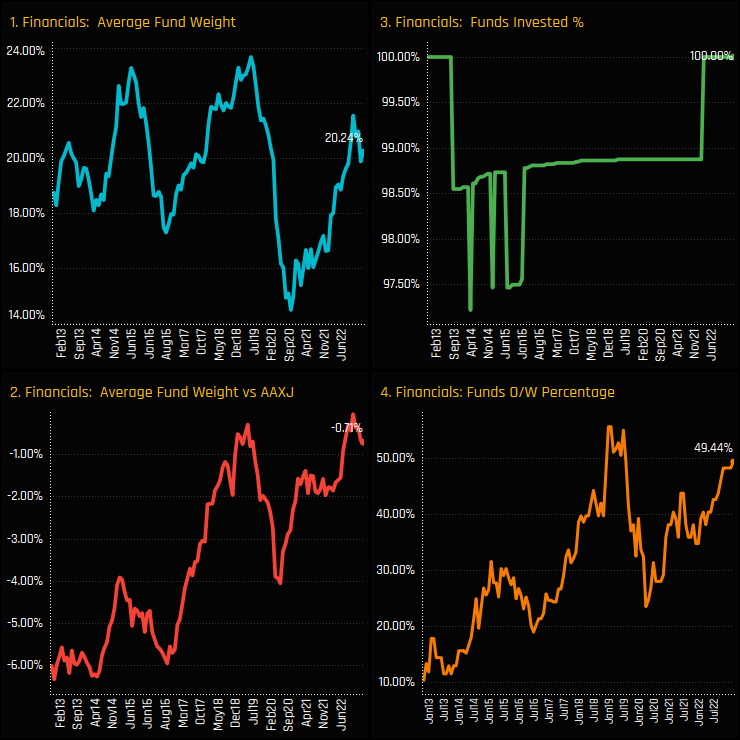
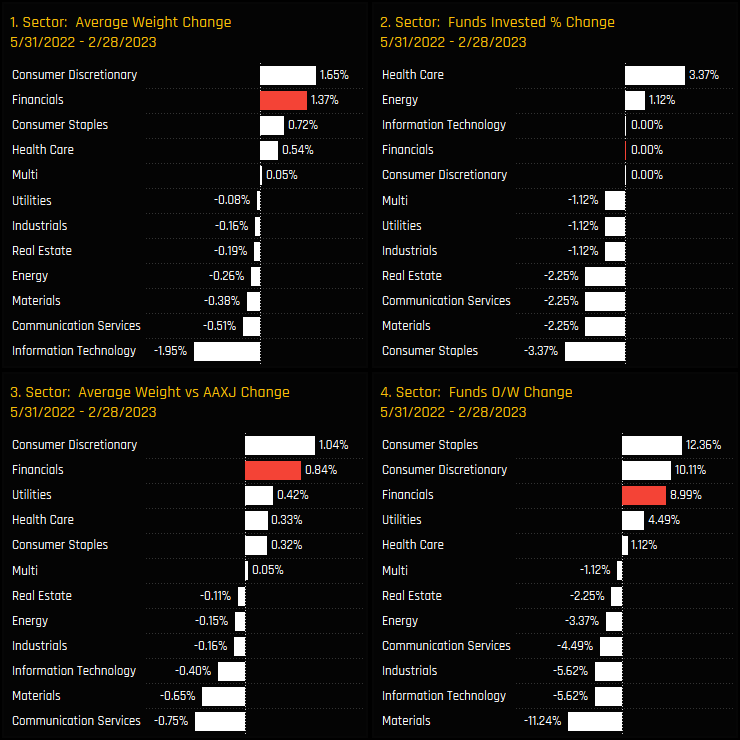
Sector Allocations & Sentiment
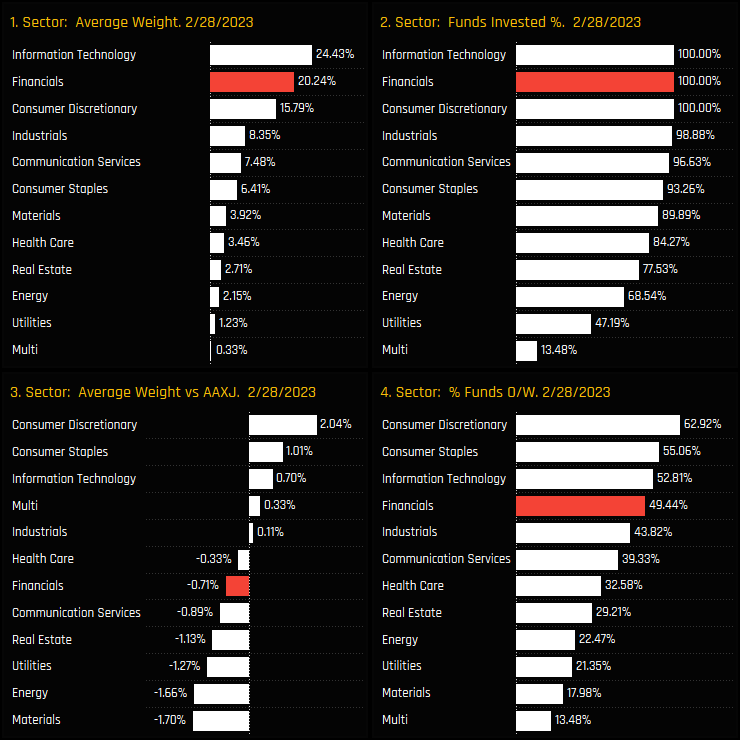
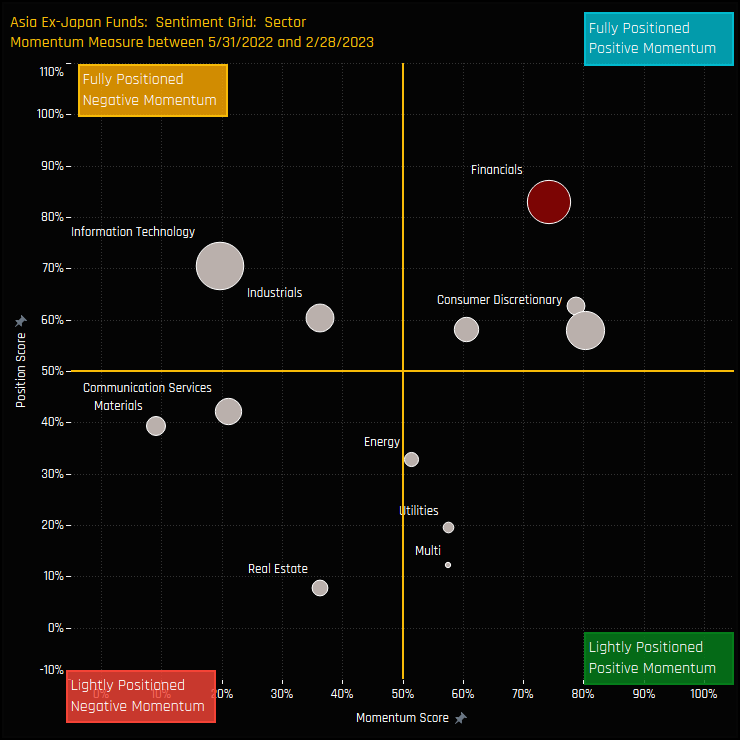
Fund Holdings & Activity
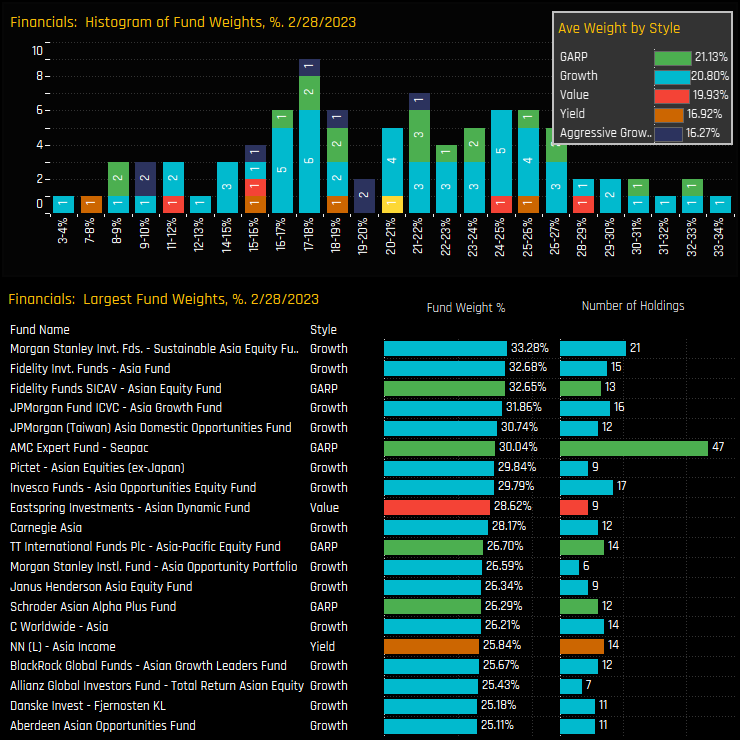
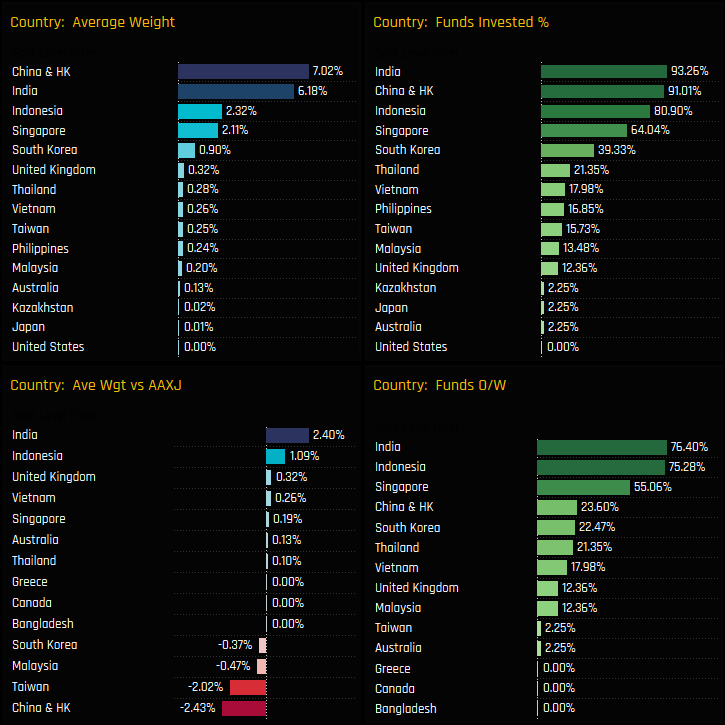
Financials Country Positioning


Country Sentiment
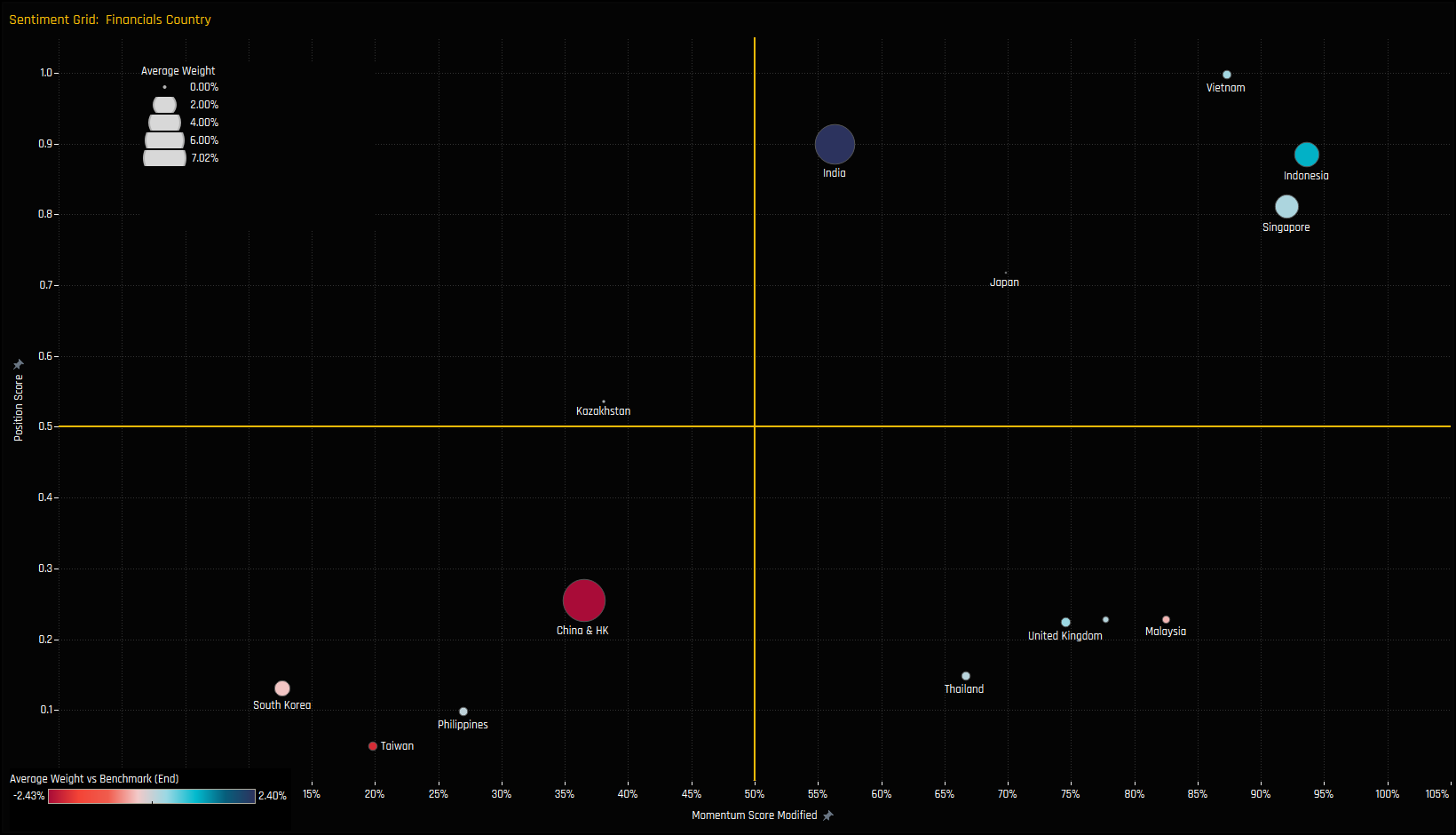
Stock Holdings & Activity
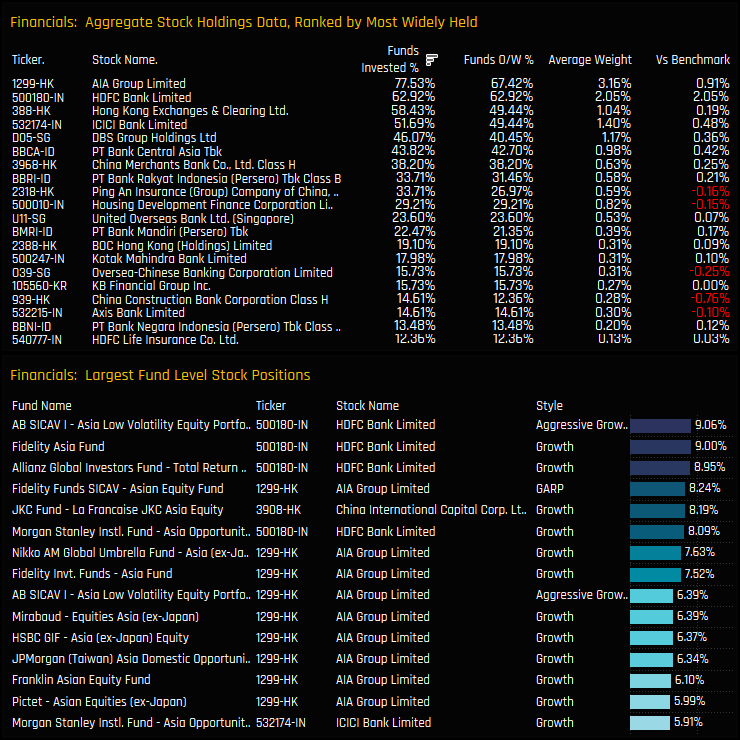

Conclusions & Links
An increasing number of Asia Ex-Japan funds are positioning themselves overweight the Financials sector. Over the course of 2022 and in to 2023, managers have actively switched from underweight to overweight, though this has been a selective rotation. On a country level, selected ASEAN nations have benefited from inflows, whilst Asia Ex-Japan investors remain cautious on China & HK, Taiwan and South Korean Financials.
On a stock level, the sector is home to a number of high conviction holdings, led by AIA Group Limited and HDFC Bank, though there has been a strong degree of rotation among individual stocks. Over the longer-term, ownership levels have risen to record highs for a number of companies, including HDFC Bank, ICICI Bank and HK Exchanges & Clearing as the chart opposite shows. Against this, Ping An Insurance and China Construction Bank Corp have seen ownership levels fall heavily in recent years.
Please click below for an extended data report on the Financials sector. Scroll down for stock profiles for ICICI Bank and AIA Group Limited.

Stock Profile: ICICI Bank

Stock Profile: AIA Group Limited

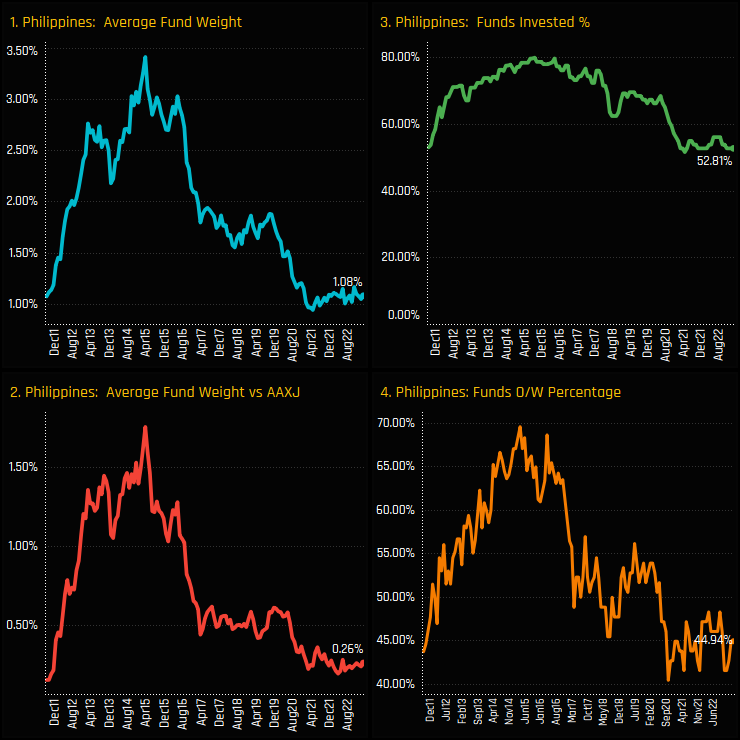
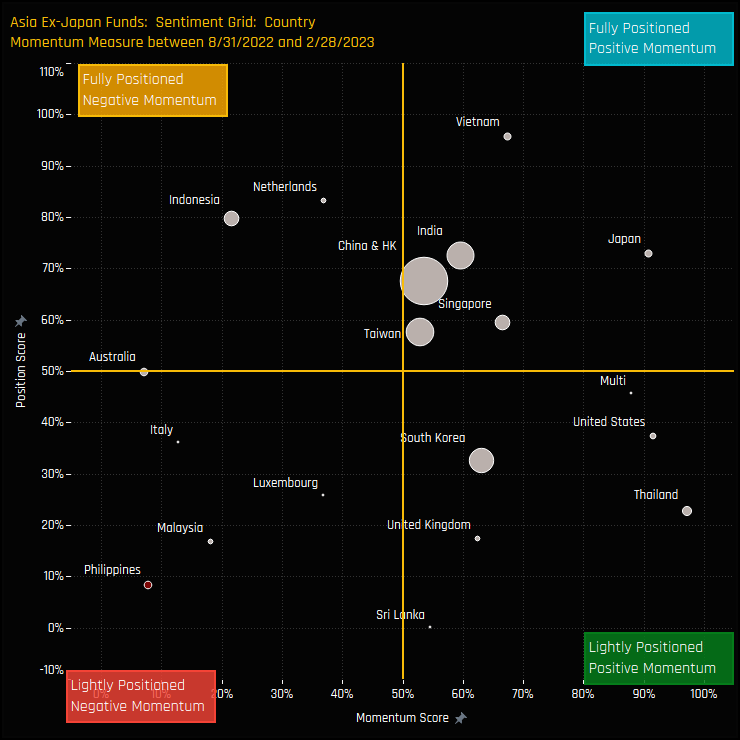
Fund Holdings and Activity


Stock Holdings & Activity
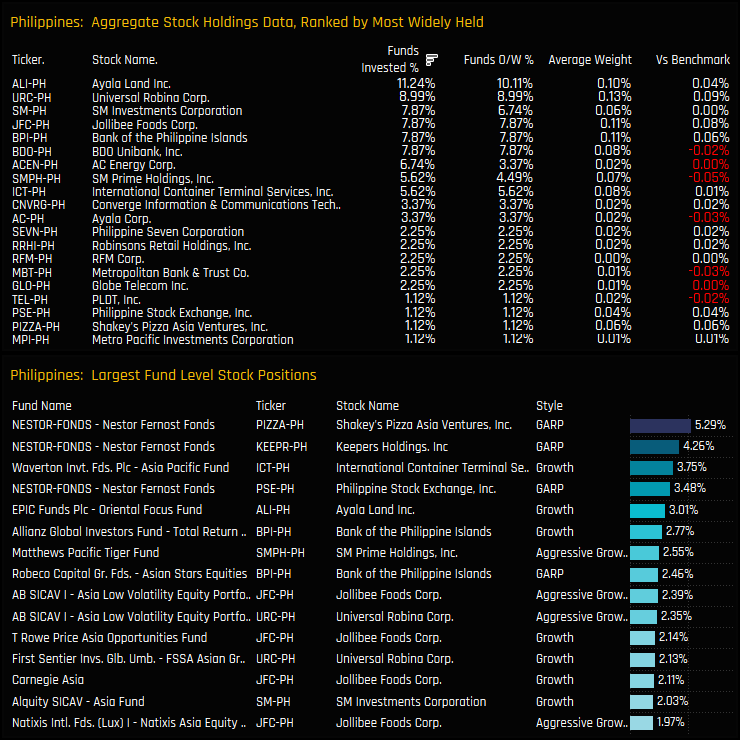
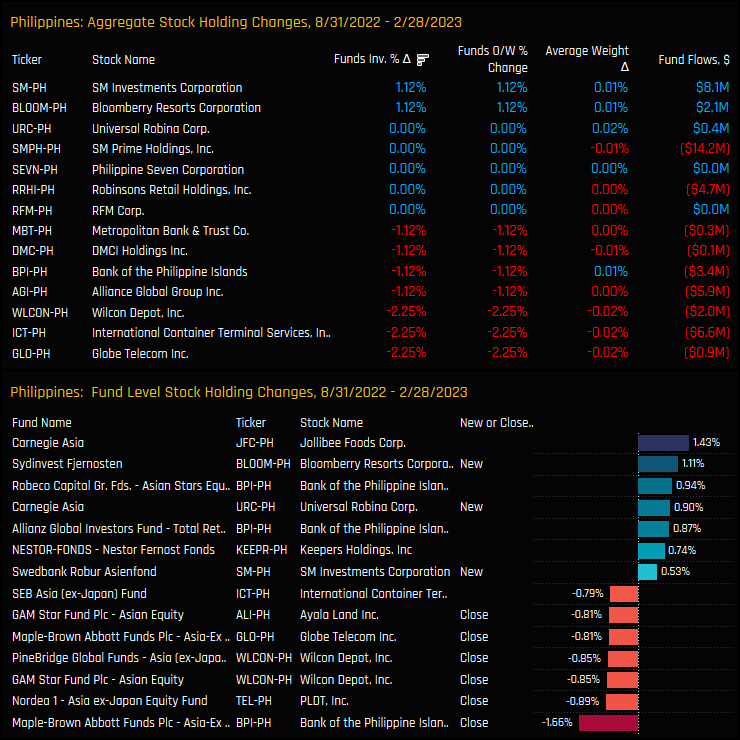
Conclusion and Links
In a world where relative performance is king, the risks of NOT holding exposure to the Philippines is diminishing. Shrinking benchmark weights and a dwindling active investor base means it is becoming ever easier to avoid Philippines exposure entirely. The charts to the right show The Philippines well down the pecking order of both average fund weights (ch1) and the percentage of funds invested (ch2). Against the benchmark, the favourable rankings more reflect a small benchmark weight than a high conviction overweight.
Of course, this lack of positioning presents an opportunity for the contrarian investor, should the investment case present itself, but right now sentiment among the managers in our analysis isn’t pointing in that direction.
For more data and analysis on positioning in The Philippines among active Asia Ex-Japan investors, please click on the link opposite for the latest positioning report.

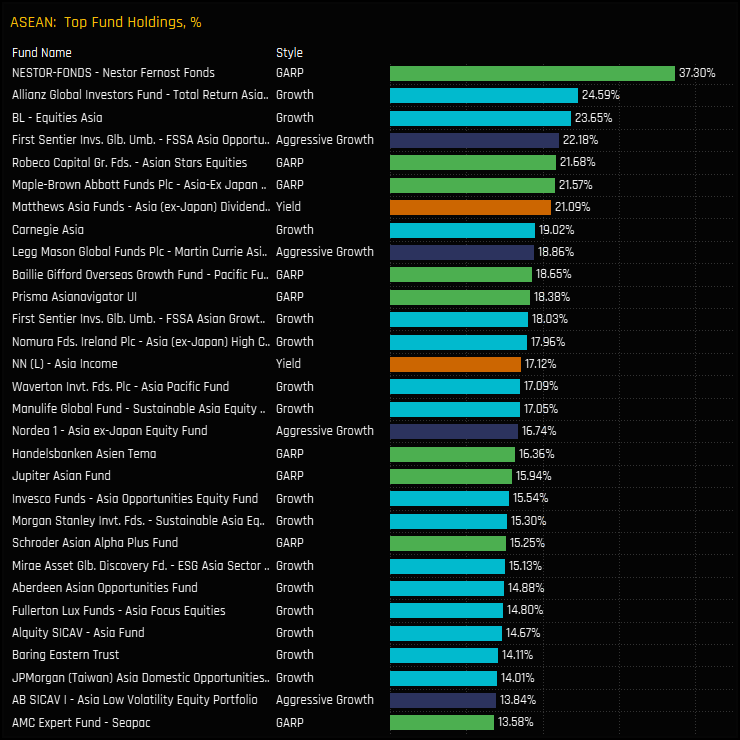
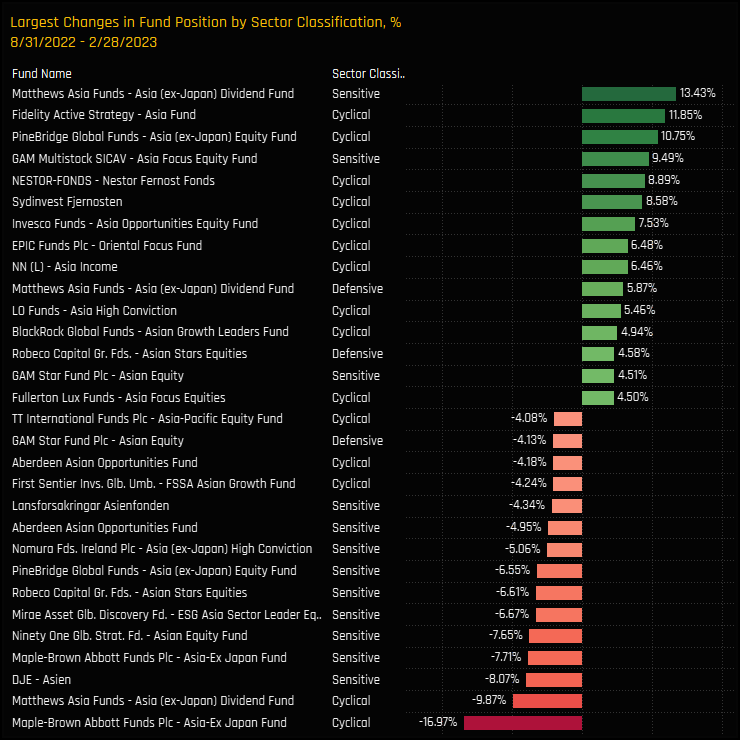
Fund Flows, $
Fund flows are also captured, with each 2-page dossier on the major sectors, regions and countries breaking down the largest flows on a fund level. The below chart shows the largest flows in India, the number of buyers and sellers and the net flows out of the country over the last 6-months.


Download
For more analysis, data or information on active investor positioning in your market, please get in touch with me on steven.holden@copleyfundresearch.com
Related Posts

- Steve Holden
- August 29, 2023
Asia Ex-Japan Fund Positioning Analysis, August 2023
104 Asia Ex-Japan Funds, AUM $66bn Asia Ex-Japan Fund Positioning Analysis, August 2023 In this ..

- Steve Holden
- August 16, 2022
Asia Ex-Japan Fund Positioning Analysis, August 2022
93 Active Asia Ex-Japan Funds, AUM $63bn Investor Positioning Insights Singapore Financials: Su ..

- Steve Holden
- October 11, 2022
Asia Ex-Japan Funds: Q3 Performance & Attribution
92 Asia Ex-Japan funds, AUM $60bn. Q3 Performance & Attribution In this piece, we provide a ..

